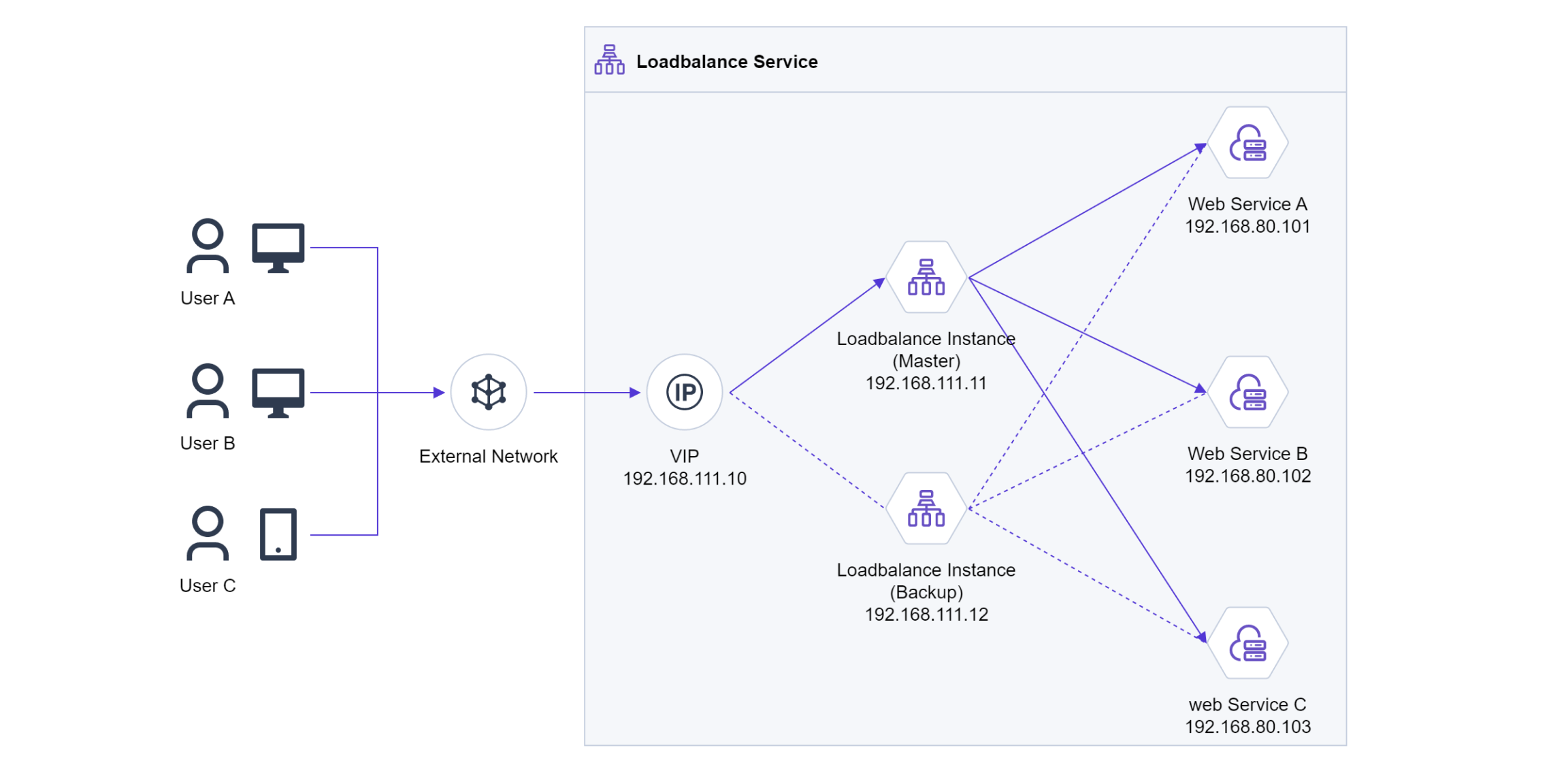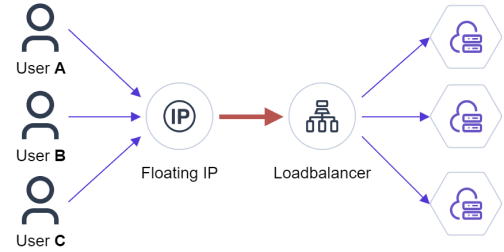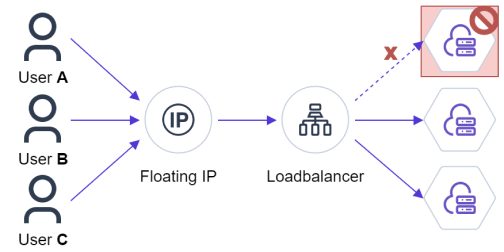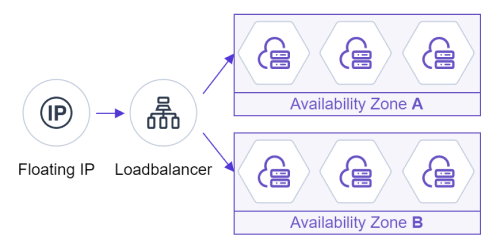
Perfect health check mechanism ensures real-time online business.

Efficiently creates and adjusts distribution rules with one-click installation for rapid deployment and real-time effect.; Creates and adjusts distribution rules efficiently.

Multiple scheduling algorithms are available. It supports accurate control of traffic forwarding according to various L4/L7 layer characteristics. Supports multiple backend resources such as virtual machines, bare metal, etc.
Load balancing distributes the access traffic from the public address to multiple cloud hosts, automatically detects and isolates the unavailable back-end cloud host services, so as to improve the fault tolerance and availability of the business. EasyStack Exclusive load balancing (DLB) allot exclusive CPU, memory, network and other resources for load balancing instances, which can ensure the stability of business when dealing with massive business access requests. Depending on the business scenario, you can choose to use the workload mode such as TCP/UDP/HTTP/HTTPS, and the HTTP/HTTPS seven layer workload provides a variety of policy matching algorithms, so that you can easily redirect the request and other actions according to the results of the policy matching algorithm.


Multiple replicas were deployed to improve task processing capacity and control plane reliability.
The flexible topology of primary/standby/single node can be configured to provide high availability of the load forwarding surface.
Regular and uninterrupted health check, automatically eliminate the fault service, ensure that the service is not dropped.

According to the actual business scenarios, load balancing instances with different specifications are created, and their CPU, memory, network and other resources are exclusively shared.

It can easily handle tens of thousands of concurrent requests, and can support up to 50W QPS.

It supports multiple load balancing algorithms and distributes traffic requests automatically.
It supports a variety of load balancing protocols and flexibly responds to different back-end services.

It has out of the box experience. You can deploy load balancing environments easily with a clean graphical interface.
With certificate management service, it provides a centralized certificate management system for HTTPS protocol.

The four-layer load balancing supports TCP protocol, UDP protocol and PROXY protocol.
Layer seven load balancing supports both HTTP protocol and HTTPS protocol.

For the business with large traffic access, the corresponding distribution strategy can be set through load balancing to evenly distribute the traffic to multiple back-end cloud host servers for processing. Examples include large portals, mobile app marketplaces, etc.

For services with higher reliability requirements, multiple back-end cloud hosts can be added to the load balancer. The load balancer will find and shield the faulty cloud hosts in time through regular health checks, and forward the traffic to other normal running back-end cloud hosts to ensure that the service is not interrupted. Such as the official website, billing services, Web services, etc.

For services with high reliability and disaster tolerance requirements, elastic load balancing can distribute traffic across available zones, and establish real-time service disaster tolerance deployment. Even if there is a network failure in one availability zone, the load balancer can still forward the traffic to the back-end cloud host in other availability zones for processing. Such as banking business, police business, large application system and so on.